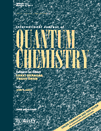The quantum theory of atoms in positronic molecules: The subsystem variational procedure
Abstract
This contribution deals with the subsystem variational procedure within the context of the quantum theory of atoms in positronic molecules (QTAIPM). Before introducing the subsystem energy functional termed as joint subsystem energy functional, a novel notation and the combination strategy are disclosed in detail by restating the positronic subsystem hypervirial theorem. They are employed in proposing the proper subsystem energy functional, the validity of which is checked by various criteria. The zero flux surfaces of the joint density distribution are used to define the topological atoms in the positronic molecules, and they are incorporated into the subsystem variational procedure as proper real space boundary conditions. The variational procedure finally yields the flux of the joint current property density that also appears in the positronic subsystem hypervirial theorem. At every stage, the corresponding equations for the purely electronic systems within the context of the quantum theory of atoms in molecules (QTAIM) are presented to clearly reveal the analogy between these two formalisms and to emphasize the importance of combining the property density distributions in the QTAIPM. The presented material demonstrates the internal consistency of the whole framework and discloses the fact that the QTAIM must be regarded as a variant of the QTAIPM. Furthermore, this formalism promises an extended QTAIM, which is hoped to resolve the issue of molecular structure beyond the clamp nuclei approximation. © 2010 Wiley Periodicals, Inc. Int J Quantum Chem, 2011




